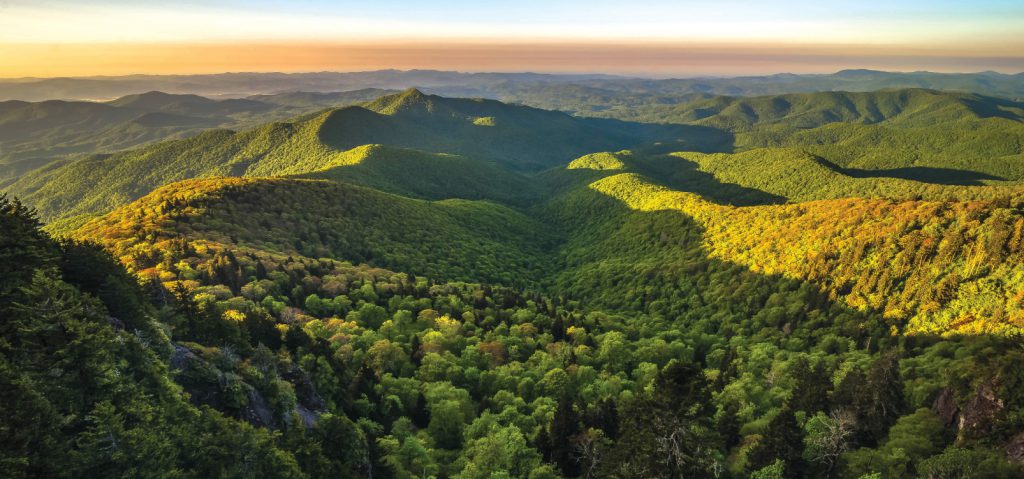The Solution To Climate Change Grows On Trees

The American public is tired of half measures on climate change. Seven in ten Americans want utility companies to completely overhaul their operations and generate 100 percent of the nation’s electricity from renewables in the near future, according to a new poll.
That’s an ambitious goal considering that renewable energy accounts for just 17 percent of electricity generation today. Utility companies often claim an all-renewable future is impossible, since wind and solar only generate power when the wind is blowing and the sun is shining. Utilities say they need a reliable energy source, like natural gas or coal, that can produce electricity at night and on calm days.
Fortunately, there’s an environmentally friendly alternative to fossil fuels — and utilities can use it around the clock. Wood biomass, trees and the parts of trees that the timber industry can’t use, is plentiful and reliable. And it helps utilities dramatically reduce their carbon footprint on a lifecycle basis.
Replacing fossil fuels with wood pellet should be part of our overall approach to preventing catastrophic climate change.
Climate change is primarily caused by a build-up of heat-trapping “greenhouse gases” like carbon dioxide in the atmosphere. Last year, the United Nations’ Intergovernmental Panel on Climate Change released a comprehensive report detailing the potential consequences of global temperatures rising 1.5°C above pre-industrial levels. It warned of more extreme weather events — including heat waves and droughts — rising seas, and risks to food and water supplies.
Already, the planet has warmed roughly 1°C above pre-industrial levels. And that level keeps rising as we burn more fossil fuels — which emit lots of carbon dioxide.
We don’t have much time left to prevent further temperature increases. That’s why Americans are so determined to drastically cut emissions by embracing renewable energy.
There’s no shortage of talk about solar and wind energy. And rightfully so. These sources account for a growing share of U.S. electricity generation and help reduce emissions. But wood pellet also has an important role to play in the renewable energy revolution.
Wood biomass is relatively simple to produce. Companies take wood that would have otherwise gone to waste — like limbs and sawdust — and grind it into wood pellets. Power plants can burn those pellets to generate electricity.
Wood biomass is much more environmentally friendly than fossil fuels. Scientists and regulators around the world agree, wood pellet can displace up to 90 percent of the equivalent lifecycle greenhouse gas emissions even after accounting for supply chain emissions. It also produces far fewer harmful pollutants — like sulfur, mercury, sulphur oxide and arsenic — than fossil fuels.
Biomass isn’t a competitor with other renewable sources like wind and solar — it’s complementary. For utilities, the chief drawback of wind and solar farms is that they can’t operate 24/7. Right now, most utilities have to rely on coal and natural gas plants to generate electricity when solar and wind-powered facilities aren’t active.
Those utilities could instead rely on wood pellet. It’d be relatively inexpensive to incorporate wood pellet into our existing energy infrastructure. Many of our coal plants, for example, would only need a few simple upgrades to begin using this cleaner form of energy.
Top environmental groups, including the Intergovernmental Panel on Climate Change, support the use of wood pellet. The group has mapped out numerous pathways towards a sustainable future, and they all rely on biomass.
For more proof of biomass’ potential, look to the United Kingdom. The UK cut its carbon emissions 38 percent between 1990 and 2017, according to a report by CarbonBrief. That’s a sharper decline than any other major developed country.
The transition to renewable energy accounted for 37 percent of the UK’s 2017 emissions reductions in the electricity sector. Biomass was responsible for about a third of those reductions.
Money may not grow on trees — but the solution to climate change does. It’s time for Americans to copy the United Kingdom’s success and embrace clean, sustainable biomass.
